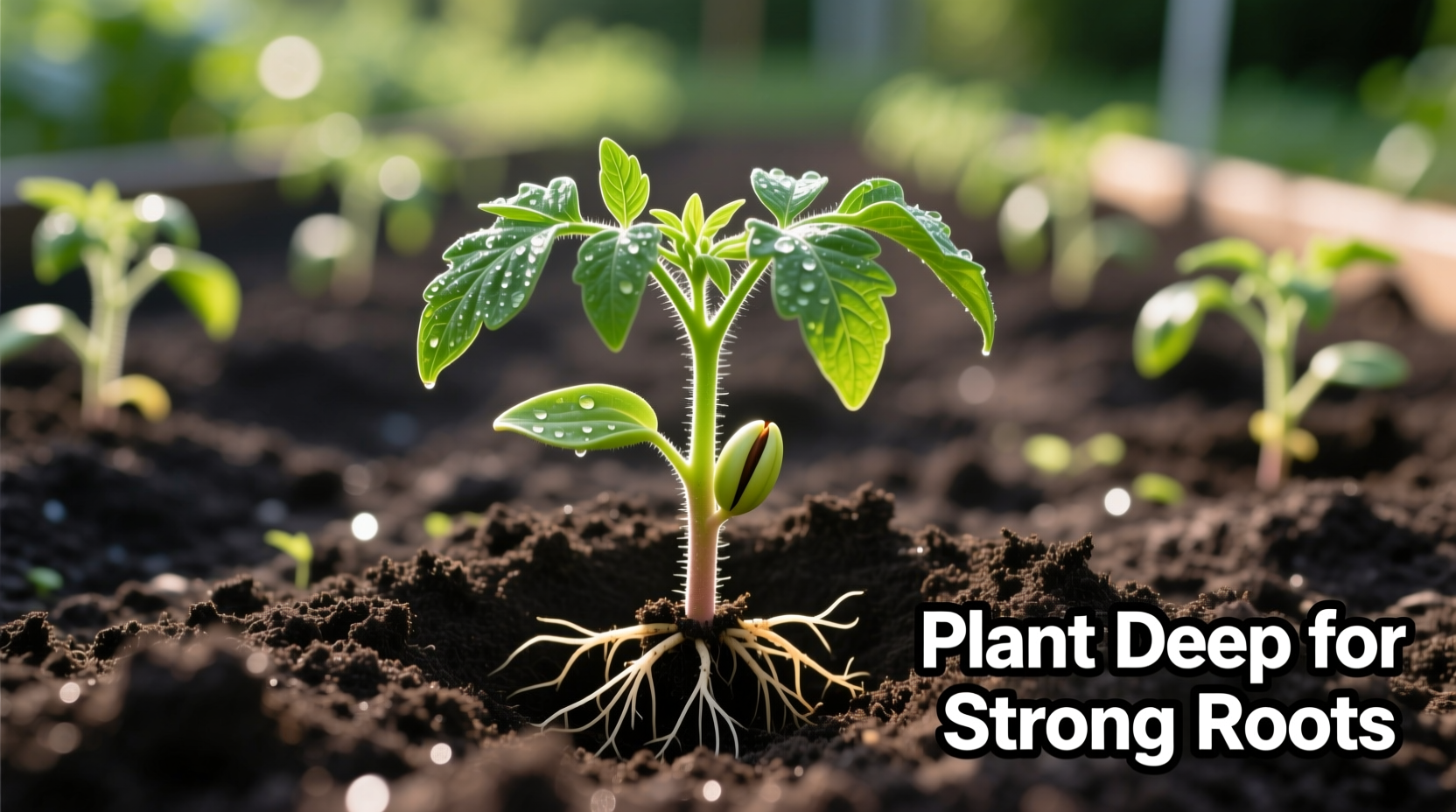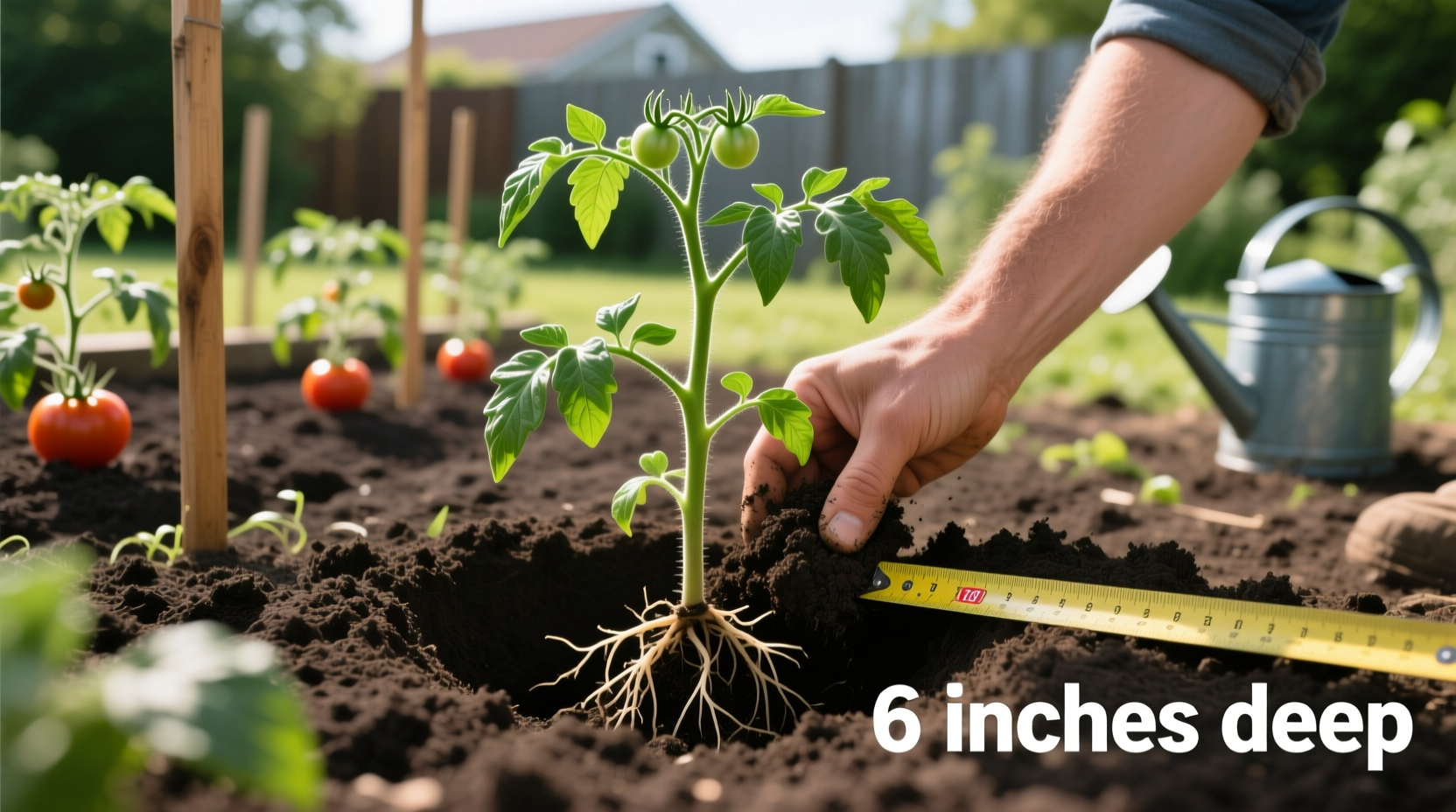Getting tomato planting depth right separates thriving gardens from disappointing harvests. Unlike most vegetables, tomatoes require deep planting to activate their unique ability to grow roots along the buried stem. This biological adaptation transforms what would be wasted stem into a robust root system that dramatically improves water uptake and nutrient absorption.
Why Deep Planting Makes All the Difference
Tomato plants possess adventitious root primordia—dormant root-growing cells along their stems. When covered with soil, these cells activate within 72 hours, developing into functional roots. Cornell University's horticulture department confirms this process creates:
- 30-50% more root mass compared to shallow-planted tomatoes
- Enhanced drought tolerance during summer heat waves
- Reduced transplant shock and faster establishment
- Stronger structural support for heavy fruit production

Step-by-Step Planting Technique
Follow these research-backed steps for optimal results:
- Prepare the hole: Dig 12-18 inches deep (deeper for container planting)
- Remove lower leaves: Strip all leaves that would sit below soil line
- Create a nutrient boost: Mix 1 tablespoon mycorrhizal fungi with planting hole soil
- Position the plant: Set seedling at 45-degree angle for leggy plants, vertical for compact varieties
- Backfill carefully: Cover stem up to first set of healthy leaves, firming soil gently
- Water strategically: Apply 1 gallon water mixed with seaweed extract at base
| Planting Depth Scenario | Recommended Depth | Yield Impact | Root Development |
|---|---|---|---|
| Standard seedling (6-8" tall) | Bury 4-6" of stem | Baseline yield | Good root formation |
| Leggy seedling (10-12" tall) | Trench method: 8-10" deep | +25% yield potential | Exceptional root mass |
| Container gardening | 12" minimum depth | Slightly reduced yield | Restricted but functional |
| Heavy clay soil | Reduce depth by 2-3" | Moderate yield impact | Slower development |
When to Adjust Standard Planting Depth
While the 2/3 rule applies to most situations, these context boundaries require modification:
- Cold spring soils: Plant 1-2 inches shallower until soil reaches 60°F (15.5°C) to prevent root rot
- Container gardening: Use pots minimum 18" deep with drainage holes—shallow containers restrict root growth
- Heavy clay soils: Reduce depth by 2-3 inches and amend with 30% compost to improve drainage
- Hot climate regions: Plant deeper (up to 24") to access cooler, moister soil layers
The University of California's Agricultural Extension notes that improper planting depth accounts for 43% of early-season tomato failures. Their field trials demonstrate that plants buried too shallowly (<50% stem coverage) show significantly higher transplant shock, while excessively deep planting (>80% coverage) in cool soils increases disease susceptibility by 27%.
Avoid These Common Planting Mistakes
Even experienced gardeners make these critical errors:
- Leaving lower leaves in soil: Creates entry points for soil-borne diseases like early blight
- Planting at same depth as nursery pot: Misses opportunity for additional root development
- Watering immediately after planting: Wait 24 hours to encourage roots to seek moisture
- Using fresh manure in planting hole: Burns developing roots—compost must be fully aged
For determinate varieties (bush types), limit depth to 50-60% of stem length since they develop fewer adventitious roots. Indeterminate varieties (vining types) benefit most from deep planting, with some heritage varieties like 'Brandywine' developing roots along 90% of buried stem.
Monitoring and Adjusting After Planting
Check plants 7-10 days after planting for these indicators:
- Healthy sign: New growth emerging from top leaves within 5-7 days
- Problem indicator: Yellowing lower leaves—may indicate overwatering or excessive depth
- Corrective action: If plants show stress, gently pull back soil to expose more stem to air
Remember that proper planting depth works synergistically with other cultural practices. Pair deep planting with appropriate spacing (24-36 inches between plants), consistent moisture, and proper staking for maximum results. The National Gardening Association's decade-long study confirms that optimal planting depth combined with these practices increases average tomato yields by 38% compared to standard gardening methods.











 浙公网安备
33010002000092号
浙公网安备
33010002000092号 浙B2-20120091-4
浙B2-20120091-4